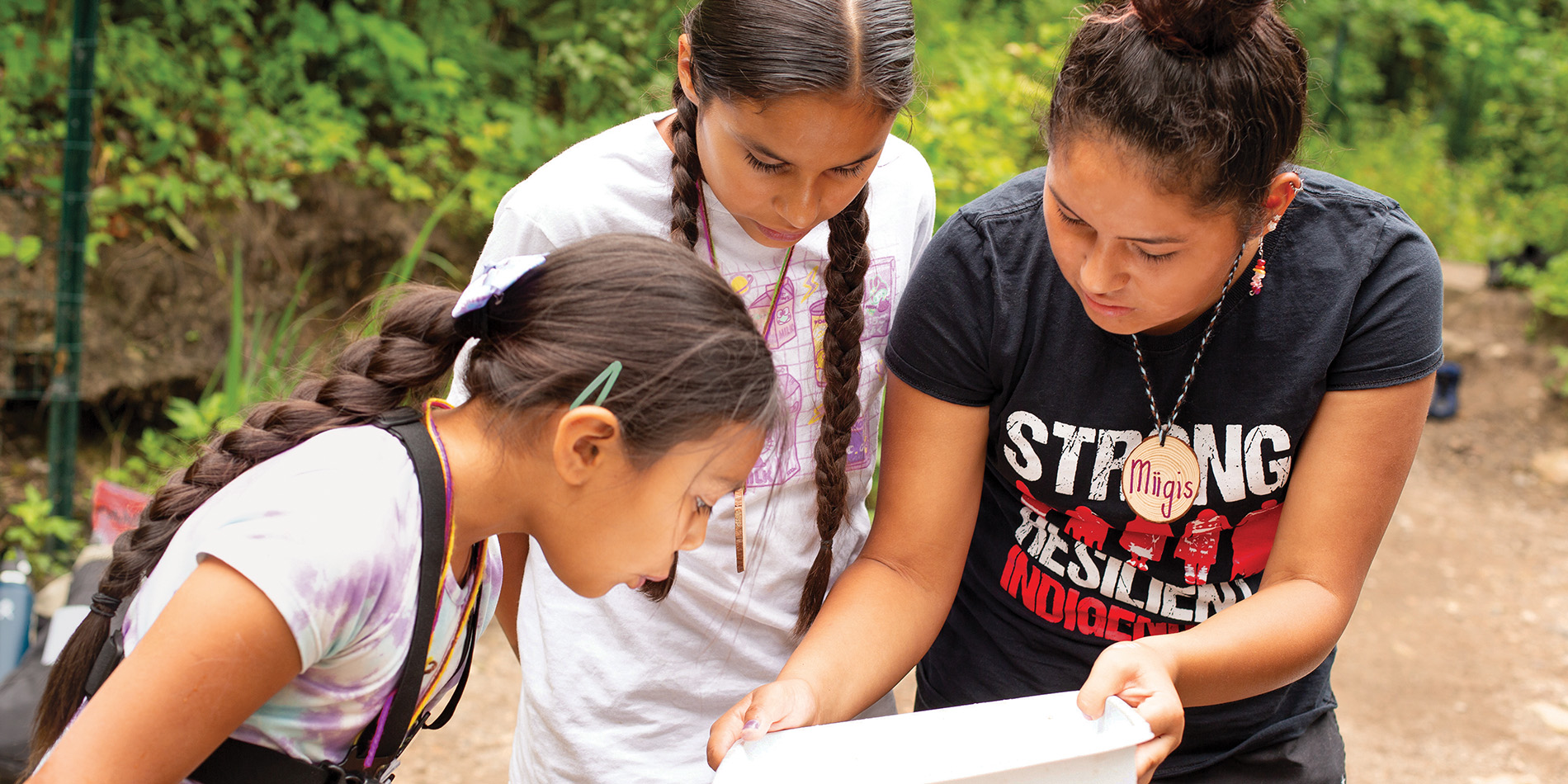FIVE WAYS TO MOVE SCHOOL OUTDOORS
Outdoor education is more than sitting outside on tree stumps or taking field trips. Megan Bang, the James E. Johnson Professor of Learning Sciences, has five tips to help educators, parents, and families learn actively with nature.
Make it intergenerational. Walk with an elder or relative and ask what they remember about rainy days and water from their childhood. Encourage children to imagine what Lake Michigan will be like 100 years from now. Gathering perspectives and memories of elders is critical, as is considering a decision’s impact many generations into the future.
Start the day with familial and cultural practices. Create a routine by gathering around stories. Indigenous peoples learn how to be in the world through stories, poems, and songs shared across generations.
Remake relationships. Think carefully about culture in the classroom. A study found that children’s books with Indigenous illustrators often have animals in realistic habitats, as opposed to wearing clothes or driving cars—which gives children a human-centered understanding of biology.
Visit local outdoor places. Take wondering and observational walks, harvest and forage, grow gardens, and contribute to restoration projects. Schools often focus on homework completion, and, while import- ant, that isn’t necessarily what moves your spirit or makes you feel needed.
Embrace the arts and everyday forms of making change. At Bang’s summer camp, outdoor science explorations are interlaced with artistic pursuits such as weaving, drumming, and writing. The arts help children dream about possible futures, Bang says.
